Design of a Novel Electric Diagnostic Technique for Fault Analysis of Centrifugal Pumps
Abstract
1. Introduction
2. Fault Analysis Test Setup
3. Results and Analysis
4. Conclusions
Author Contributions
Funding
Acknowledgments
Conflicts of Interest
Appendix A
- ;
- ;
- indicates the average splitting value;
- indicates the average of the distance of each sample from the origin;
- d indicates d axis current;
- q indicates q axis current;
- N is the number of samples.
References
- Glowacz, A.; Glowacz, W.; Glowacz, Z.; Kozik, J.; Gutten, M.; Korenciak, D.; Khan, Z.F.; Irfan, M.; Carletti, E. Fault Diagnosis of Three Phase Induction Motor Using Current Signal, MSAF-Ratio15 and Selected Classifiers. Arch. Metall. Mater. 2017, 62, 2413–2419. [Google Scholar] [CrossRef]
- Irfan, M. Modeling of fault frequencies for distributed damages in bearing raceways. J. Nondestruct. Eval. 2019, 38, 98. [Google Scholar] [CrossRef]
- Leite, V.C.; da Silva, J.G.B.; Veloso, G.F.C.; da Silva, L.E.B.; Lambert-Torres, G.; Bonaldi, E.L.; de Oliveira, L.E.D.L. Detection of localized bearing faults in induction machines by spectral kurtosis and envelope analysis of stator current. IEEE Trans. Ind. Electron. 2015, 62, 1855–1865. [Google Scholar] [CrossRef]
- Irfan, M.; Saad, N.; Ibrahim, R.; Asirvadam, V.S.; Magzoub, M. An intelligent fault diagnosis of induction motors in an arbitrary noisy environment. J. Nondestruct. Eval. 2016, 35, 12. [Google Scholar] [CrossRef]
- Irfan, M.; Saad, N.; Ibrahim, R.; Asirvadam, V.S.; Hung, N.T. Analysis of bearing outer race defects in induction motors. In Proceedings of the 2014 5th International Conference on Intelligent and Advanced Systems (ICIAS), Kuala Lumpur, Malaysia, 3–5 June 2014. [Google Scholar]
- Irfan, M.; Saad, N.; Ibrahim, R.; Asirvadam, V.S.; Magzoub, M. An online fault diagnosis system for induction motors via instantaneous power analysis. Tribol. Trans. 2017, 60, 592–604. [Google Scholar] [CrossRef]
- Wang, Y.; Lu, C.; Liu, H.; Wang, Y. Fault diagnosis for centrifugal pumps based on complementary ensemble empirical mode decomposition, sample entropy and random forest. In Proceedings of the 12th World Congress on Intelligent Control and Automation, Guilin, China, 12–15 June 2016. [Google Scholar]
- McKee, K.K.; Forbes, G.L.; Mazhar, I.; Entwistle, R.; Howard, I. A review of machinery diagnostics and prognostics implemented on a centrifugal pump. In Lecture Notes in Mechanical Engineering; Springer: London, UK, 2011. [Google Scholar] [CrossRef]
- Al Thobiani, F. The Non-Intrusive Detection of Incipient Cavitation in Centrifugal Pumps. Ph.D. Thesis, University of Huddersfield, Huddersfield, UK, 2011. [Google Scholar]
- Cockeril, A. Damage Detection of Rotating Machinery. Ph.D. Thesis, Cardiff University, Cardiff, UK, 2017. [Google Scholar]
- Sun, H.; Yuan, S.; Luo, Y. Cyclic spectral analysis of vibration signals for centrifugal pump fault characterization. IEEE Sens. J. 2018, 18, 2925–2933. [Google Scholar] [CrossRef]
- Muralidharan, V.; Sugumaran, V.; Indira, V. Fault diagnosis of monoblock centrifugal pump using SVM. Eng. Sci. Technol. 2014, 17, 152–157. [Google Scholar] [CrossRef]
- Sakthivel, N.R.; Nair, B.B.; Elangovan, M.; Sugumaran, V.; Saravanmurugan, S. Comparison of dimensionality reduction techniques for the fault diagnosis of mono block centrifugal pump using vibration signals. Eng. Sci. Technol. 2017, 17, 30–38. [Google Scholar] [CrossRef]
- Irfan, M.; Saad, N.; Ibrahim, R.; Asirvadam, V.S.; Alwadie, A. Analysis of distributed faults in inner and outer race of bearing via park vector analysis method. Neural Comput. Appl. 2019, 31, 683–691. [Google Scholar] [CrossRef]
- Irfan, M. A novel non-intrusive method to diagnose bearings surface roughness faults in induction motors. J. Fail. Anal. Prev. 2018, 18, 145–152. [Google Scholar] [CrossRef]
- Saad, N.; Irfan, M.; Ibrahim, R. Condition Monitoring and Faults Diagnosis of Induction Motors: Electrical Signature Analysis; CRC Press & Routledge-Taylor & Francis Group: Boca Raton, FL, USA, 2018; ISBN 9780815389958. [Google Scholar]
- Stopa, M.M.; Cardoso Filho, B.J.; Martinez, C.B. Incipient detection of cavitation phenomenon in centrifugal pumps. IEEE Trans. Ind. Appl. 2014, 50, 120–126. [Google Scholar] [CrossRef]
- Park, Y.; Jeong, M.; Lee, S.B.; Antonino-Daviu, J.A.; Teska, M. Influence of Blade Pass Frequency Vibrations on MCSA-based Rotor Fault Detection of Induction Motors. IEEE Trans. Ind. Appl. 2017, 53, 2049–2058. [Google Scholar] [CrossRef]
- Irfan, M.; Saad, N.; Ibrahim, R.; Asirvadam, V.S.; Alwadie, A.; Aman, M. An Assessment on the Non-Invasive Methods for Condition Monitoring of Induction Motors; Fault Diagnosis and Detection; InTech Publishing: London, UK, 2017. [Google Scholar] [CrossRef]
- Harihara, P.P.; Parlos, A.G. Sensorless detection of impeller cracks in motor driven centrifugal pumps. In Proceedings of the ASME International Mechanical Engineering Congress and Exposition, Boston, MA, USA, 2–6 November 2008. [Google Scholar]
- Choi, S.; Haque, M.S.; Tarek, M.T.B.; Mulpuri, V.; Duan, Y.; Das, S.; Garg, V.; Ionel, D.M.; Masrur, M.A.; Mirafzal, B.; et al. Fault diagnosis techniques for permanent magnet ac machine and drives—A review of current state of the art. IEEE Trans. Transp. Electrif. 2018, 4, 444–463. [Google Scholar] [CrossRef]
- Irfan, M.; Saad, N.; Ibrahim, R.; Asirvadam, V.S.; Magzoub, M.; Hung, N.T. A non invasive method for condition monitoring of induction motors operating under arbitrary loading conditions. Arab. J. Sci. Eng. 2015. [Google Scholar] [CrossRef]
- Drif, M.H.; Cardoso, A.J.M. Stator fault diagnostics in squirrel cage three-phase induction motor drives using the instantaneous active and reactive power signature analyses. IEEE Trans. Ind. Electron. 2014, 10, 1348–1360. [Google Scholar] [CrossRef]
- Kim, J.; Shin, S.; Lee, S.B.; Gyftakis, K.N.; Drif, M.H.; Cardoso, A.J.M. Power spectrum based detection of induction motor rotor faults for immunity to false alarms. IEEE Trans. Energy Convers. 2015, 30, 1123–1132. [Google Scholar] [CrossRef]
- Zarie, J. Induction motors bearing fault detection using pattern recognition techniques. Expert Syst. Appl. 2012, 39, 68–73. [Google Scholar] [CrossRef]
- Bacha, K.; Salem, S.B.; Chaari, A. An improved combination of Hilbert and Park transforms for fault detection and identification in three-phase induction motors. Electr. Power Energy Syst. 2012, 43, 1006–1016. [Google Scholar] [CrossRef]
- Kuruppu, S.S.; Kulatunga, N.A. D-Q current signature-based faulted phase localization for SM-PMAC machine drives. IEEE Trans. Ind. Electron. 2015, 62, 113–121. [Google Scholar] [CrossRef]
- Alwadie, A. The decision making system for condition monitoring of induction motors based on vector control model. Machines 2017, 5, 27. [Google Scholar] [CrossRef]
- Parra, A.P.; Enciso, M.C.A.; Ochoa, J.O.; Peñaranda, J.A.P. Stator fault diagnosis on squirrel cage induction motors by ESA and EPVA. In Proceedings of the 2013 Workshop on Power Electronics and Power Quality Applications (PEPQA), Bogota, Colombia, 6–7 July 2013. [Google Scholar]
- Salem, S.B.; Touti, W.; Bacha, K.; Chaari, A. Induction motor mechanical fault identification using park vector approach. In Proceedings of the 2013 International Conference on Electrical Engineering and Software Applications, Hammamet, Tunisia, 21–23 March 2013. [Google Scholar]
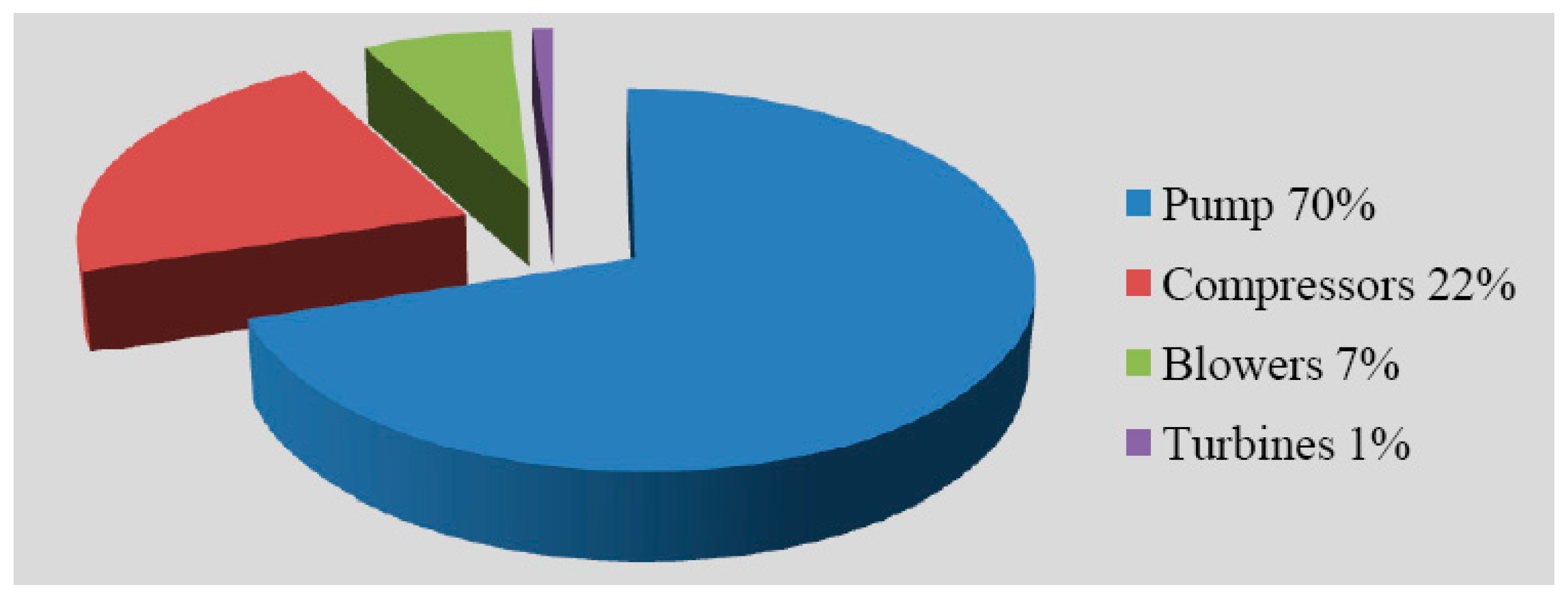
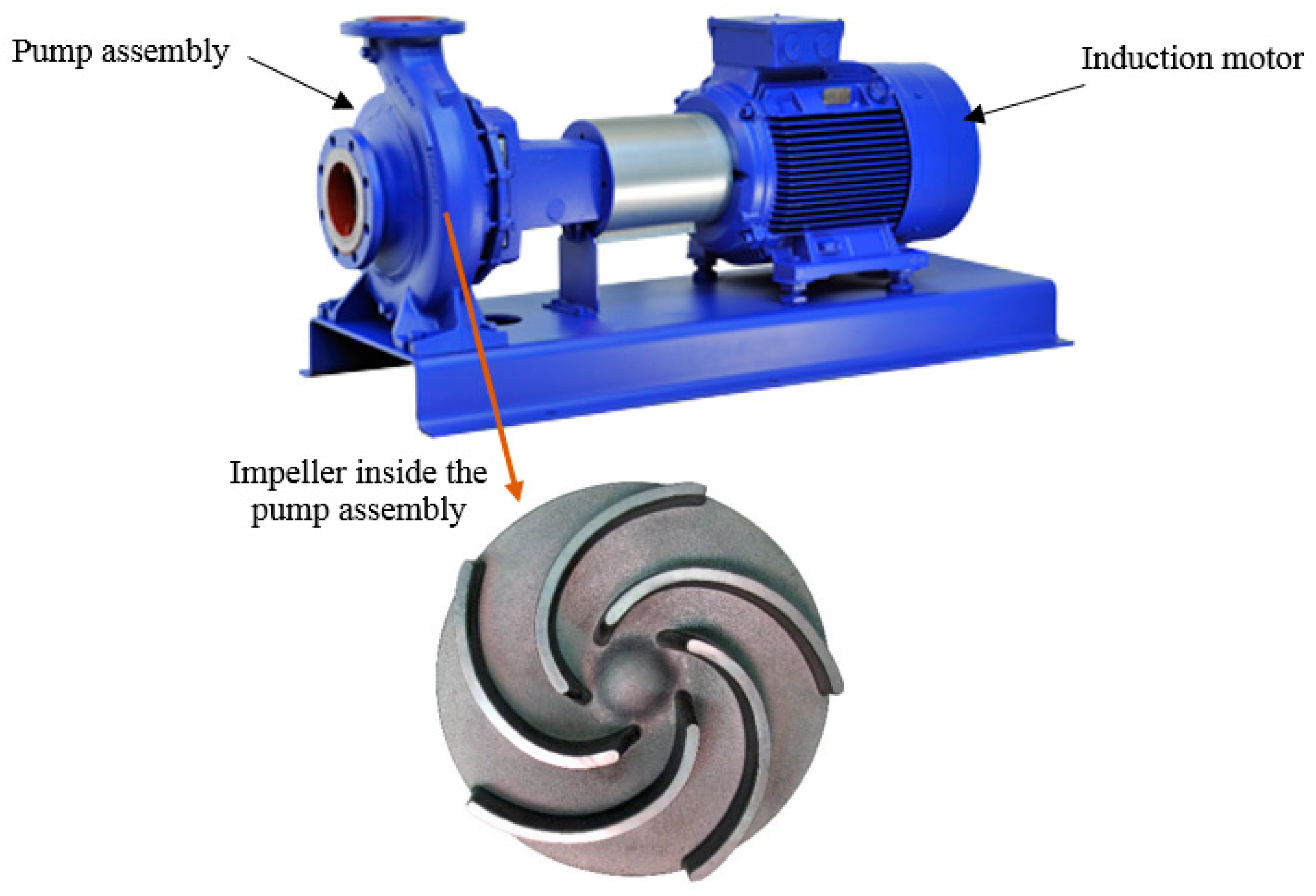
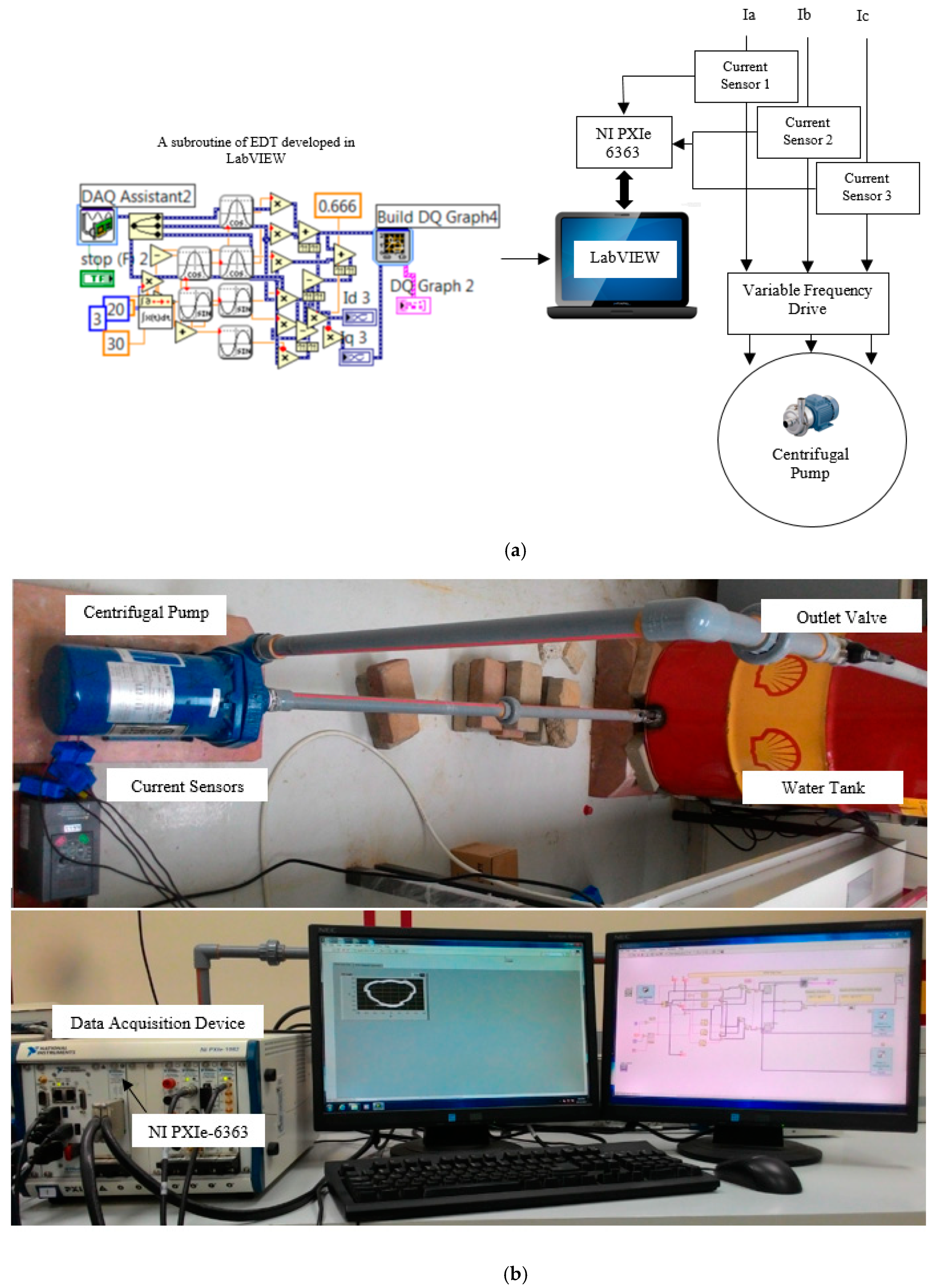
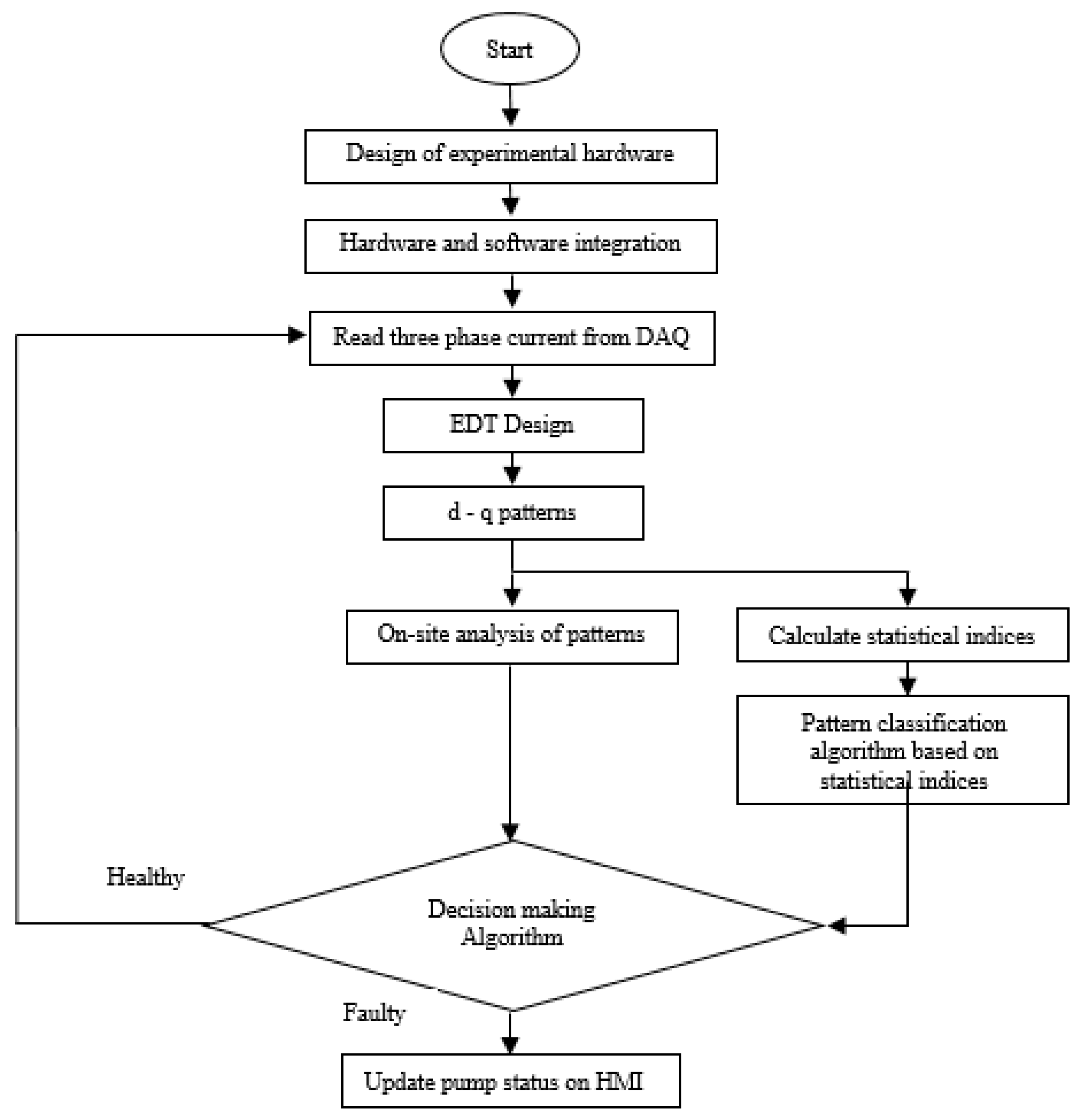
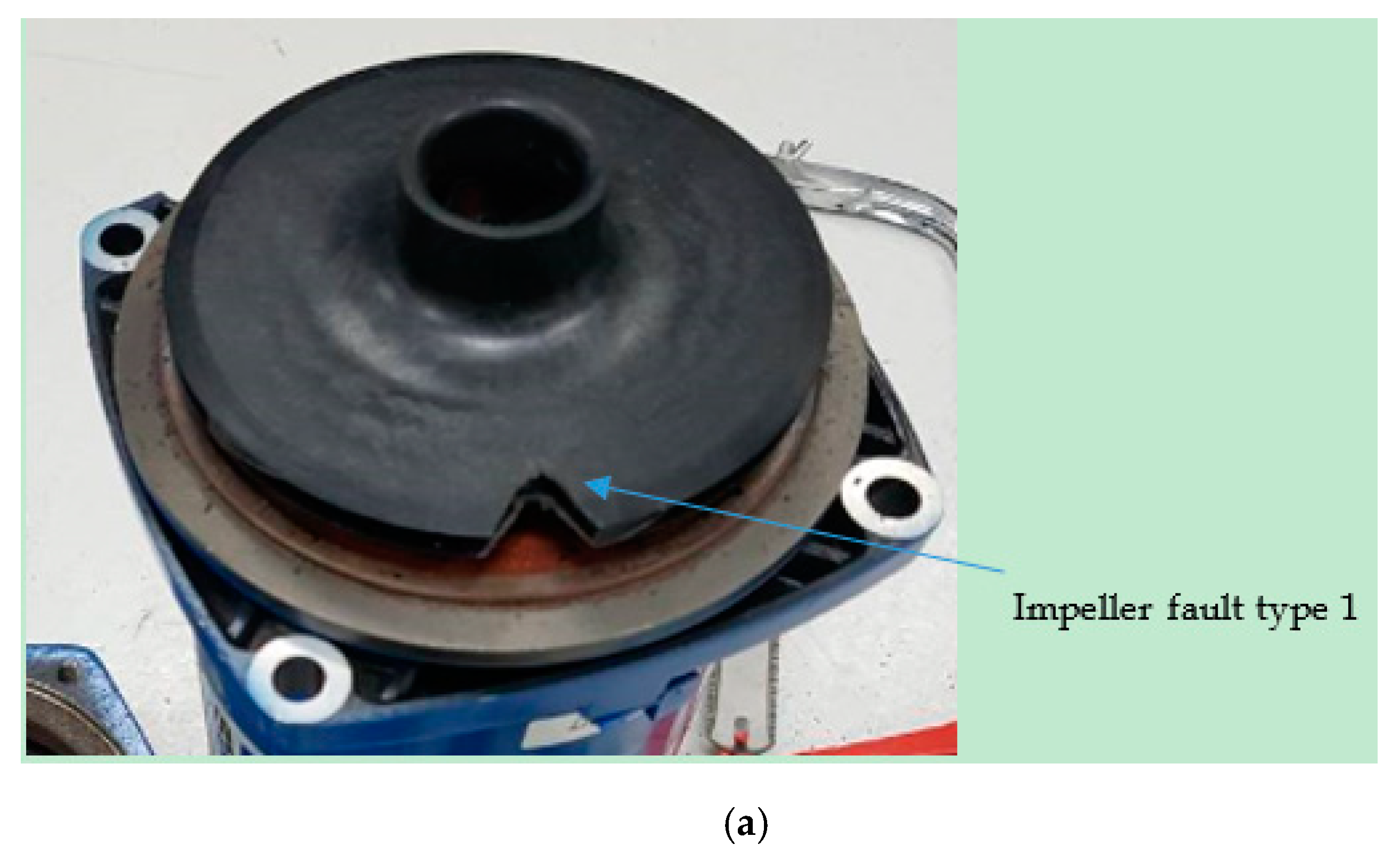

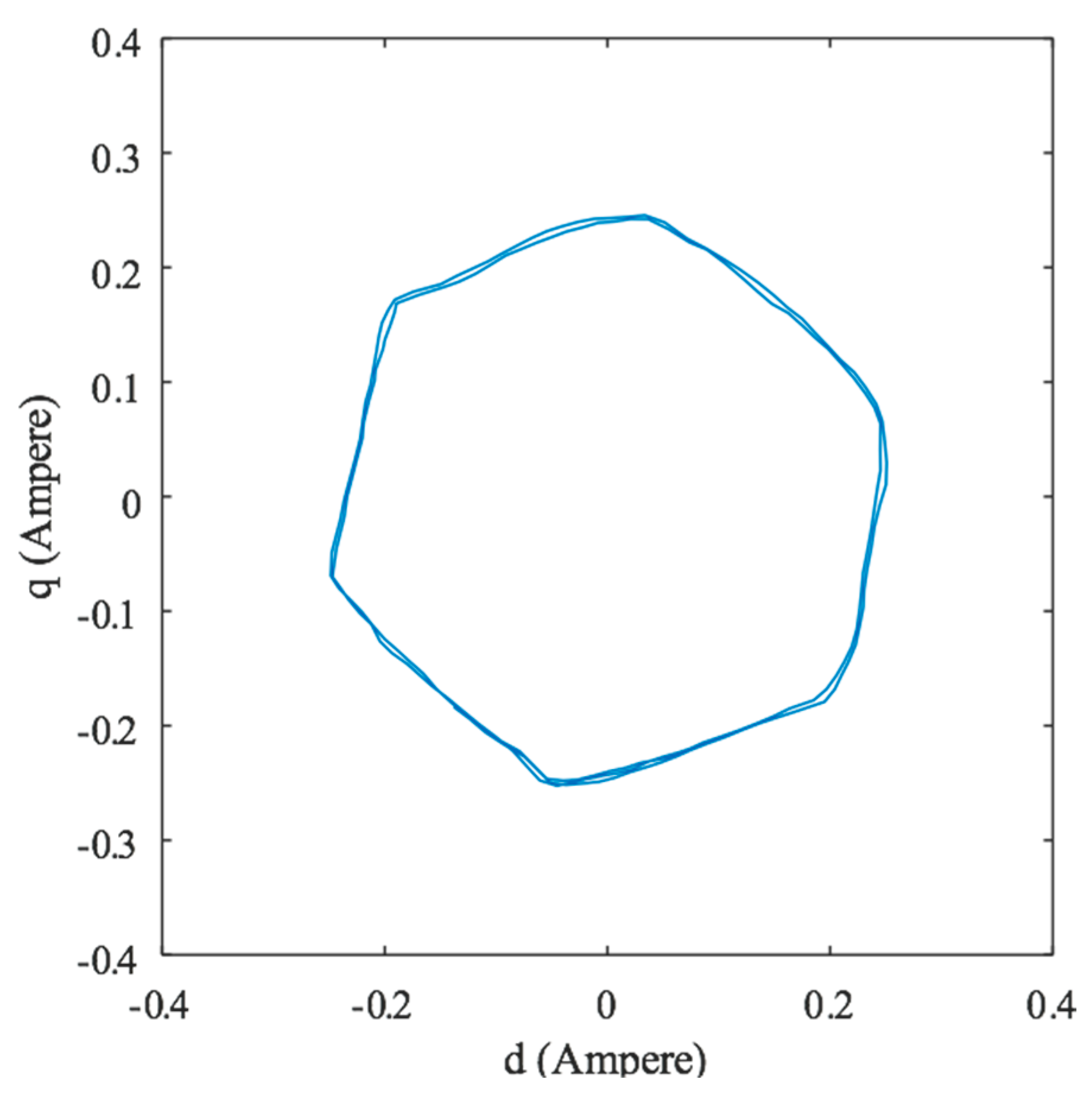

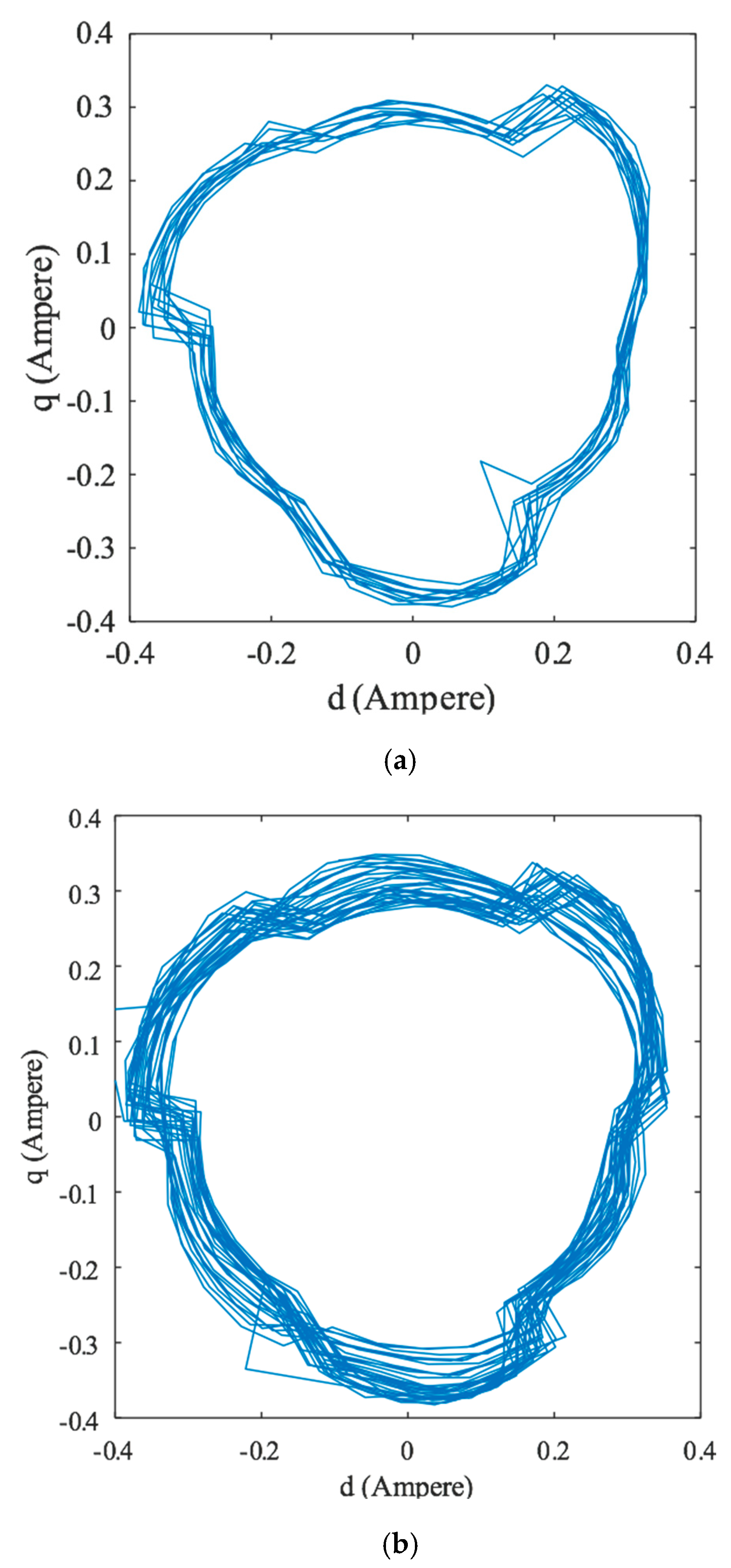
| Healthy Pump | Pump with Impeller Faults | Pump with Pipe Blockage | |||
|---|---|---|---|---|---|
| Type 1 | Type 2 | Type 3 | Half Block | Full Block | |
| 0.70 | 1.25 | 1.90 | 2.40 | 2.20 | 2.90 |
| Past Papers | This Paper | ||||
|---|---|---|---|---|---|
| Reference | Year | Fault Types | Splitting Factor | Fault Type | Splitting Factor |
| [14] | 2017 | Bearing outer race | 1.75 | Impeller faults | 1.25, 1.90, 2.40 |
| Bearing inner race | 1.70 | ||||
| [29] | 2013 | Winding damage | 1.8 | Pipe blockages | 2.20, 2.90 |
| [30] | 2013 | Eccentricity | 1.64 | ||
| Reference | Past Papers | This Paper | |||||
|---|---|---|---|---|---|---|---|
| Year | Algorithm Used | Faults Investigated | Limitations | Algorithm Used | Faults Investigated | Strengths | |
| [11] | 2018 | Vibration Analysis | Seal damage and pump cavity faults |
| EDT | Impeller and pipe blockage faults |
|
| [7] | 2016 | Vibration Analysis | Bearing faults and impeller faults |
| |||
| [18] | 2017 | MCSA | Impeller faults in pump |
| |||
| [17] | 2014 | MCSA | Pump cavity faults |
| |||
| [14] | 2017 | Park Analysis | Bearing faults in induction motor | Centrifugal pump faults not investigated | |||
| [28] | 2017 | Park Analysis | Bearing faults in induction motor |
| |||
© 2019 by the authors. Licensee MDPI, Basel, Switzerland. This article is an open access article distributed under the terms and conditions of the Creative Commons Attribution (CC BY) license (http://creativecommons.org/licenses/by/4.0/).
Share and Cite
Irfan, M.; A, A.; Glowacz, A. Design of a Novel Electric Diagnostic Technique for Fault Analysis of Centrifugal Pumps. Appl. Sci. 2019, 9, 5093. https://doi.org/10.3390/app9235093
Irfan M, A A, Glowacz A. Design of a Novel Electric Diagnostic Technique for Fault Analysis of Centrifugal Pumps. Applied Sciences. 2019; 9(23):5093. https://doi.org/10.3390/app9235093
Chicago/Turabian StyleIrfan, Muhammad, Alwadie A, and Adam Glowacz. 2019. "Design of a Novel Electric Diagnostic Technique for Fault Analysis of Centrifugal Pumps" Applied Sciences 9, no. 23: 5093. https://doi.org/10.3390/app9235093
APA StyleIrfan, M., A, A., & Glowacz, A. (2019). Design of a Novel Electric Diagnostic Technique for Fault Analysis of Centrifugal Pumps. Applied Sciences, 9(23), 5093. https://doi.org/10.3390/app9235093





